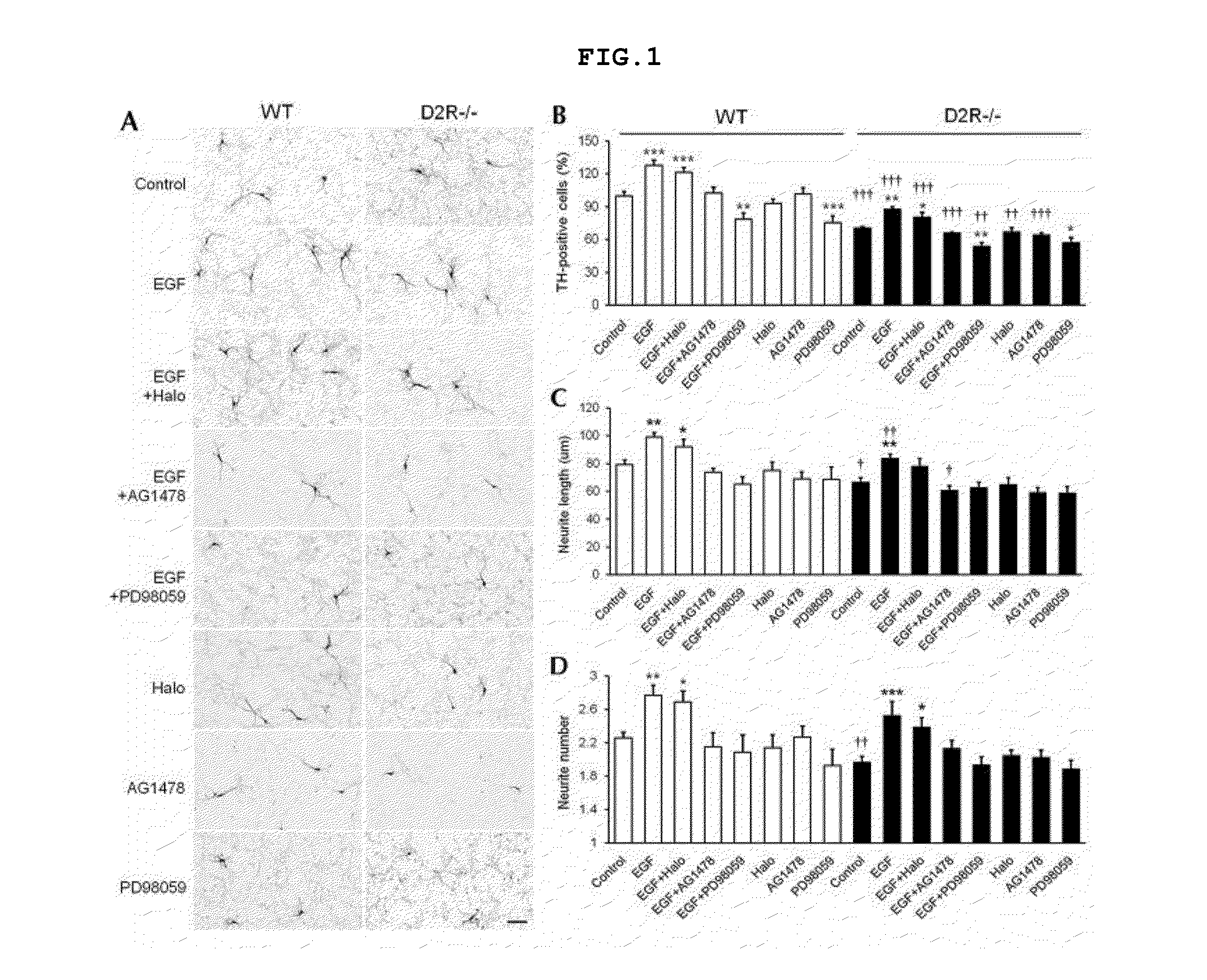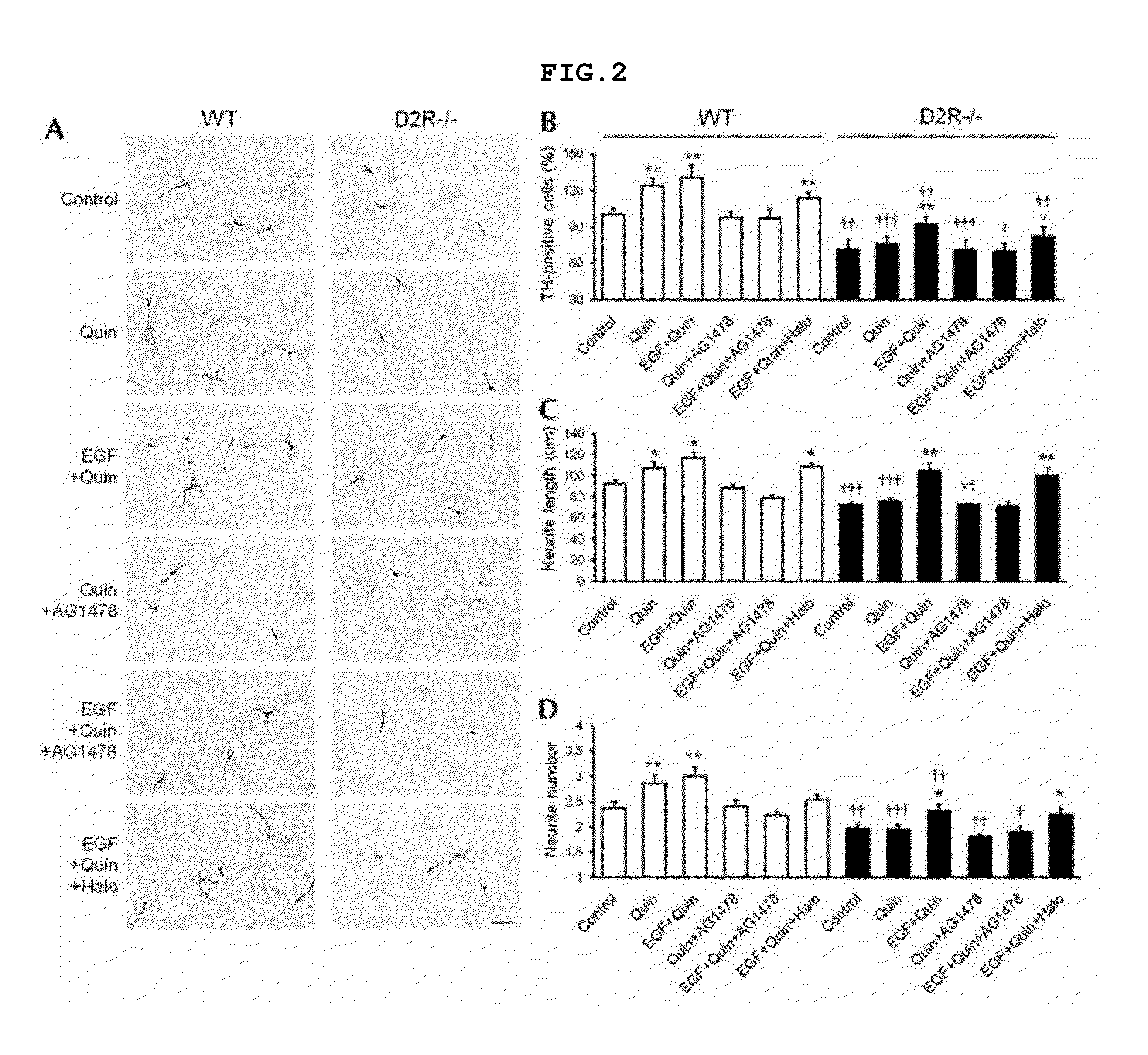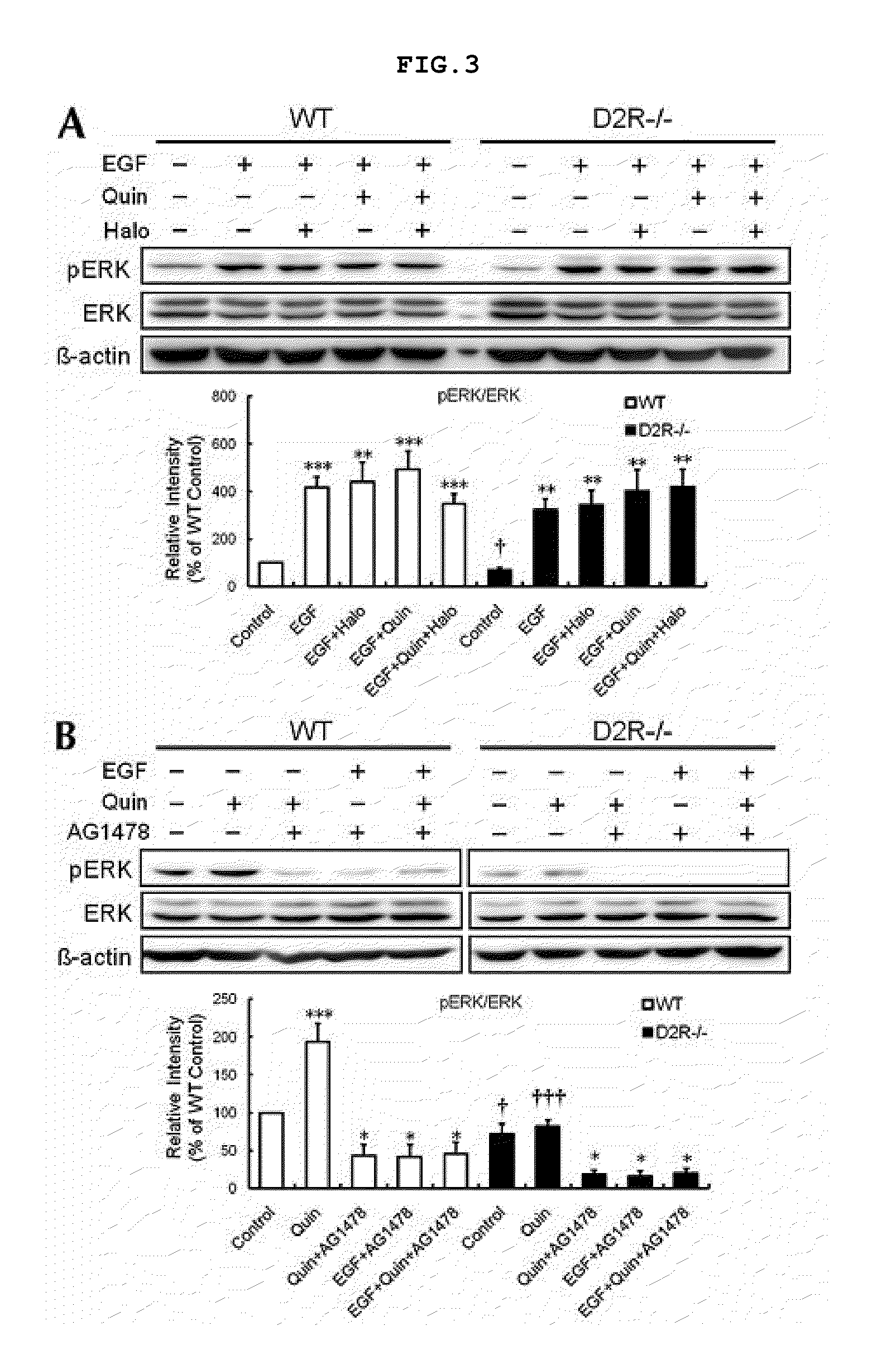Regulation of differentiation into dopaminergic neurons by metalloprotease
a technology of dopaminergic neurons and metalloprotease, which is applied in the direction of cell culture active agents, peptide/protein ingredients, dna/rna fragmentation, etc., can solve the problems of clinical depression, decrease in dopamine release, and manic depressive illness or schizophrenia, so as to reduce the expression or activity of adam17
- Summary
- Abstract
- Description
- Claims
- Application Information
AI Technical Summary
Benefits of technology
Problems solved by technology
Method used
Image
Examples
example 1
Examination of the Ability of EGF to Induce Differentiation into Dopaminergic Neural Cells
[0088](1) Examination of Induction of Differentiation into Dopaminergic Neural Cells by EGF Treatment
[0089]Midbrain neurons derived from normal mice and D2R− / − mice were treated with each of EGF, EGF+haloperidol, EGF+AG1478 and EGF+PD98059, and then stained with TH by an immunostaining technique. Then, the number of TH-positive cells, the length of neurites and the number of neurites in the midbrain neurons were compared between EGF, EGF+haloperidol, EGF+AG1478 and EGF+PD98059 to determine the abilities to induce differentiation into dopaminergic neural cells. As a result, it was shown that the differentiation of dopaminergic neural cells from all the normal mouse and D2R− / − mouse midbrain neurons was promoted by EGF and that this effect was completely blocked by the EGFR inhibitor AG1478 and the MAPK inhibitor PD98059, but was not blocked by the D2R antagonist haloperidol (see FIG. 1).
[0090](2...
example 2
Phosphorylation of ERK by EGF
[0094](1) Examination of the Abilities to Phosphorylate ERK by D2R and EGF
[0095]In order to examine whether the development of dopaminergic neural cells by D2R and EGFR is made through the ERK signaling cascade, cells were treated with EGF and quinpirole together with haloperidol and AG1478, and the phosphorylation of ERK in the cells was observed. As a result, it was shown that the phosphorylation of ERK by EGF was increased by 417% compared to that in the control and that this effect was not inhibited by haloperidol. However, it was shown that the phosphorylation of ERK by quinpirole (194%) was inhibited by AG1478 (see FIG. 3).
[0096]This suggests that the dopamine D2 receptor promotes the development of dopaminergic neural cells by phosphorylating ERK in an EGFR-dependent manner.
[0097](2) Examination of the Effect of Metalloprotease on D2R-Mediated Activation of EGFR
[0098]In order to examine whether the development of dopaminergic neural cells by D2R i...
example 3
Examination of the Effect of ADAM17 on Phosphorylation of ERK by D2R and EGFR
[0099]The present inventors performed immunohistofluorescent staining for ADAM10 and ADAM17, which have been most actively studied in the brain in connection with EGFR, and the present inventors compared the expression pattern of the dopaminergic neural cells-specific protein tyrosine hydroxylase (TH) in the substantia nigra and the ventral tegmental area on 14 days of mouse fetal development.
[0100]As a result, it was shown that both ADAM10 and ADAM17 were expressed in some TH-positive cells (see FIG. 6).
[0101]In addition, in order to examine whether ADAM17 is involved in the DR2-mediated activation of EGFR that induces the development of dopaminergic neural cells and phosphorylates ERK, a constructed ADAM17 siRNA (SEQ ID NO: 1; siADAM17) was transfected into primarily cultured midbrain neurons, and then the development of dopaminergic neural cells by quinpirole and EGF and the phosphorylation of ERK by qui...
PUM
| Property | Measurement | Unit |
|---|---|---|
| blood pressure | aaaaa | aaaaa |
| plasticity | aaaaa | aaaaa |
| morphology | aaaaa | aaaaa |
Abstract
Description
Claims
Application Information
 Login to View More
Login to View More - R&D
- Intellectual Property
- Life Sciences
- Materials
- Tech Scout
- Unparalleled Data Quality
- Higher Quality Content
- 60% Fewer Hallucinations
Browse by: Latest US Patents, China's latest patents, Technical Efficacy Thesaurus, Application Domain, Technology Topic, Popular Technical Reports.
© 2025 PatSnap. All rights reserved.Legal|Privacy policy|Modern Slavery Act Transparency Statement|Sitemap|About US| Contact US: help@patsnap.com



